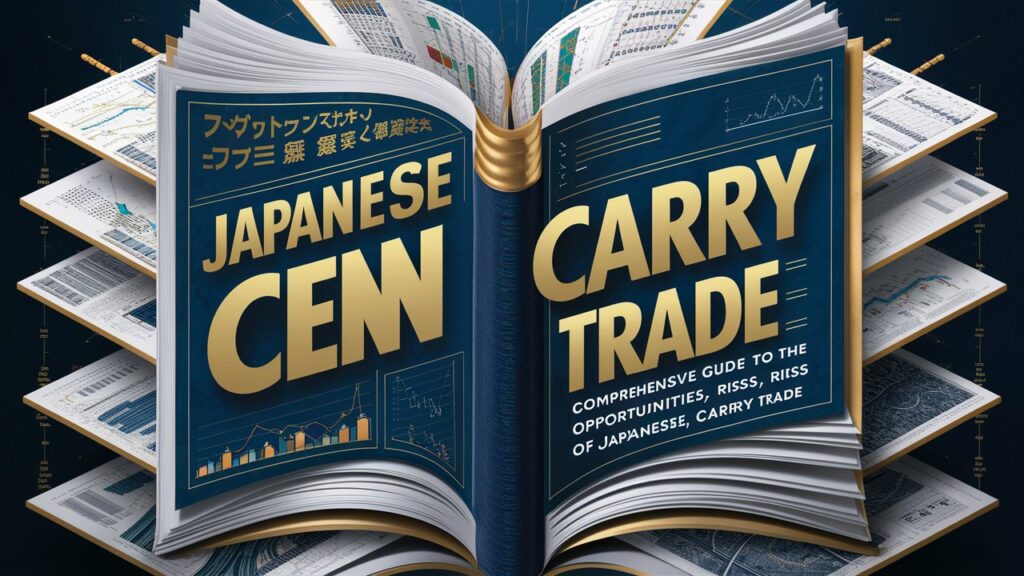Introduction
The Japanese yen (JPY) carry trade has long been a cornerstone of global currency markets, attracting investors seeking to profit from interest rate differentials. This strategy involves borrowing low-yielding yen to invest in higher-yielding assets denominated in other currencies. While the trade has historically offered lucrative returns, it is fraught with risks tied to exchange rate volatility, geopolitical shifts, and monetary policy changes. In this article, we explore the mechanics of the yen carry trade, its historical significance, key drivers, risks, and strategies to navigate this complex financial instrument. Whether you’re a seasoned trader or a curious observer, understanding the yen carry trade provides critical insights into global market dynamics.
Understanding the Basics of the Japanese Yen Carry Trade
The Japanese yen carry trade hinges on the disparity between Japan’s ultra-low interest rates and higher rates in other economies. Investors borrow yen at minimal costs (thanks to the Bank of Japan’s prolonged near-zero interest rate policy) and convert it into currencies like the US dollar, Australian dollar, or emerging market currencies, where they can earn higher returns through bonds, equities, or savings accounts.
For example, if Japan’s interest rate is 0.1% and Australia’s is 4%, a trader might borrow JPY, convert it to AUD, and pocket the 3.9% spread. However, profitability depends on stable or appreciating exchange rates. If the yen strengthens unexpectedly, the cost of repaying the borrowed yen could erase gains. This interplay of interest rates and currency movements defines the trade’s allure and peril.
Historical Context: The Rise of the Yen Carry Trade
The yen carry trade gained prominence in the 1990s and 2000s, fueled by Japan’s “Lost Decade” of stagnant growth and deflation, which prompted the BOJ to slash rates to revive the economy. Global investors capitalized on this, using cheap yen to fund speculative investments worldwide.
The strategy thrived during periods of low volatility, such as the mid-2000s, when traders poured yen into high-yield assets in emerging markets and commodity-driven economies. However, the 2008 financial crisis exposed its fragility: as markets panicked, investors rushed to repay yen loans, triggering a sharp yen appreciation (a “carry trade unwind”) that amplified losses. Similarly, the 2011 Tohoku earthquake and the 2020 COVID-19 crash saw abrupt yen rallies, punishing over-leveraged traders.
Key Drivers of the Yen Carry Trade
- Interest Rate Differentials: The bedrock of the carry trade, these differentials dictate potential profits. Central bank policies in Japan (BOJ) and target countries (e.g., the US Federal Reserve) are critical to monitor.
- Global Risk Sentiment: In “risk-on” environments, investors flock to high-yield assets, boosting demand for carry trades. Conversely, “risk-off” moods spark yen buying as a safe-haven currency.
- Japan’s Monetary Policy: Prolonged quantitative easing (QE) and yield curve control (YCC) by the BOJ keep yen borrowing costs low, sustaining the trade’s viability.
- Currency Volatility: Stable or predictable forex markets favor carry trades, while erratic swings increase repayment risks.
Risks and Challenges in the Yen Carry Trade
Despite its appeal, the yen carry trade is a high-stakes gamble. Exchange rate risk is paramount: even a slight yen appreciation can turn profits into losses. For instance, if a trader earns 5% on an Australian investment but the yen strengthens by 6%, the net result is a 1% loss.

Liquidity risk also looms during crises, as unwinding large positions can become costly. Additionally, central bank policy shifts—such as the BOJ tightening rates or foreign central banks cutting rates—can upend interest rate spreads overnight. Geopolitical tensions, natural disasters, or unexpected inflation further compound uncertainties.
Strategies for Managing Risk in Yen Carry Trades
Successful carry traders employ rigorous risk management:
- Hedging with Derivatives: Forex futures, options, or swaps can mitigate exchange rate exposure. For example, buying yen call options protects against sudden appreciation.
- Diversification: Spreading investments across multiple currencies reduces reliance on a single economy.
- Leverage Control: Over-leveraging magnifies losses; conservative position sizing is vital.
- Monitoring Macro Indicators: Tracking BOJ statements, inflation data, and global risk sentiment (via indices like the VIX) helps anticipate market turns.
The Future of the Yen Carry Trade
The yen carry trade’s viability hinges on Japan’s monetary policy and global economic trends. Recent BOJ signals of potential rate hikes (after decades of ultra-loose policy) could narrow interest rate differentials, reducing the trade’s profitability. Meanwhile, rising global inflation and tighter monetary policies in the US and Europe may alter yield dynamics.
However, as long as Japan maintains relatively low rates and global markets seek yield, the yen carry trade will persist—albeit with evolving risk-reward calculations. Innovations in algorithmic trading and ESG investing may also reshape how investors approach this strategy.
Conclusion
The Japanese yen carry trade remains a compelling yet perilous strategy, emblematic of the interplay between global finance and macroeconomic forces. While it offers opportunities to profit from interest rate disparities, its success demands vigilance against currency volatility, leverage risks, and policy shifts. As central banks navigate post-pandemic recovery and inflationary pressures, traders must adapt their strategies to thrive in this dynamic landscape.
Frequently Asked Questions (FAQs)
1. What is a carry trade?
A carry trade involves borrowing a low-interest-rate currency (like the yen) to invest in a higher-yielding currency or asset, profiting from the interest rate differential.
2. Why is the Japanese yen popular for carry trades?
Japan’s persistently low interest rates, driven by decades of deflation and BOJ policies, make yen borrowing costs exceptionally cheap.
3. What are the biggest risks in the yen carry trade?
Exchange rate fluctuations, sudden yen appreciation (“safe-haven” demand), and shifts in global interest rates or central bank policies.
4. How can investors mitigate risks in carry trades?
Using hedging instruments (options, futures), diversifying across currencies, avoiding excessive leverage, and staying informed on macroeconomic trends.
5. Has the yen carry trade ever backfired?
Yes, notably during the 2008 crisis and 2020 pandemic, when yen rallies triggered massive losses for unprepared traders.
This comprehensive guide equips you with the knowledge to navigate the yen carry trade’s opportunities and pitfalls. Whether leveraging its potential or avoiding its traps, understanding this strategy is key to mastering global currency markets.

